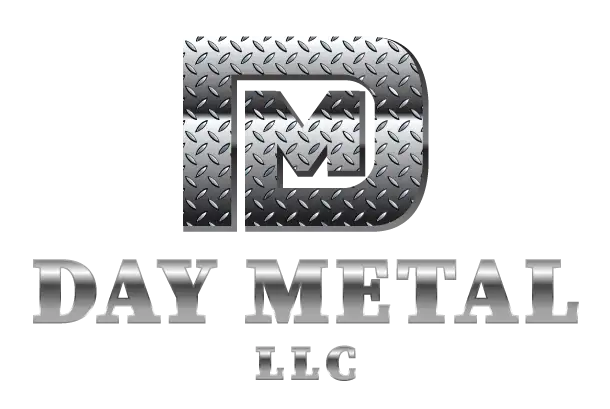Welding is one of the most important processes in metal fabrication. It joins metals together to create strong and lasting structures. But welding also involves high heat, bright light, sparks, and gases, which can make it dangerous if safety steps are ignored. That’s why knowing welding safety basics is important for anyone working in this field whether you are a beginner, a hobbyist, or a professional.
This guide explains personal protective equipment (PPE), how to set up a safe workspace, and the most common hazards welders face.
Why Welding Safety Matters
Welding accidents can cause burns, eye injuries, breathing problems, and even long-term health issues. According to industry reports, thousands of welding-related injuries are recorded every year, most of which can be prevented with simple safety practices. By using the right gear, working in a safe area, and being aware of hazards, welders can protect themselves and others.
Personal Protective Equipment (PPE) for Welding
The first line of defense in welding safety is proper PPE. Each piece of equipment protects you from different dangers.
| PPE Item | Purpose / Protection |
|---|---|
| Welding Helmet | Shields eyes and face from sparks, heat, and harmful UV/IR radiation from the arc. |
| Safety Glasses | Worn under the helmet to protect from flying debris when grinding or chipping. |
| Welding Gloves | Heat-resistant leather gloves protect hands from burns and sparks. |
| Welding Jacket/Apron | Flame-resistant clothing (leather or treated fabric) prevents burns and fire hazards. |
| Respirator/Mask | Protects lungs from welding fumes, smoke, and toxic gases. |
| Hearing Protection | Earplugs or earmuffs guard against loud noises from grinding or cutting. |
| Boots (Steel-toe, Leather) | Protects feet from falling metal pieces, sparks, and heat. |
Pro Tip: Avoid synthetic clothing when welding. Materials like nylon or polyester can melt into the skin when exposed to sparks.
Setting Up a Safe Welding Workspace
The environment where you weld is just as important as the gear you wear. A safe workspace reduces risks of fire, exposure, and accidents.
Key Steps for Workspace Safety:
- Ventilation – Always weld in a well-ventilated area or use fume extractors to remove harmful gases.
- Fire Safety – Keep fire extinguishers close by. Clear the area of flammable items like paper, fuel, or wood.
- Grounding Equipment – Properly ground your welding machine to prevent electrical shocks.
- Work Surfaces – Use metal tables or welding benches, never unstable or wooden surfaces.
- Lighting – Make sure the area is well-lit so you can clearly see your work and surroundings.
- Barriers & Screens – Use welding curtains or shields to protect others from arc flash.
Common Welding Hazards and How to Avoid Them
| Hazard | Description | Prevention |
|---|---|---|
| Arc Eye (Flash Burn) | Painful eye condition caused by UV radiation. | Always wear a welding helmet with the right shade lens. |
| Burns | Sparks and molten metal can cause skin injuries. | Wear gloves, jackets, and flame-resistant PPE. |
| Fumes & Gases | Breathing welding fumes can lead to lung problems or poisoning. | Use respirators and keep the workspace ventilated. |
| Fire & Explosion | Sparks can ignite nearby flammable items. | Keep work area clear, use fire-resistant blankets, and have extinguishers ready. |
| Electric Shock | Can happen when touching live electrical parts. | Check cables, wear dry gloves, and ground the equipment properly. |
| Noise Hazards | Grinding and cutting create damaging noise levels. | Use ear protection to prevent hearing loss. |
| Trips & Falls | Cables, tools, and clutter can cause accidents. | Keep the area organized and cables secured. |
Real-Life Example
A welder in a small shop once worked without proper ventilation. Over time, he developed serious breathing issues because he was constantly exposed to welding fumes. Later, the shop installed fume extractors and provided workers with respirators, which prevented further health problems. This example shows how even invisible dangers like fumes can harm welders if ignored.
Welding Safety Checklist
Before starting a job, ask yourself:
- Do I have all my PPE on?
- Is my area free of flammable materials?
- Is my ventilation system working?
- Are my cables, tools, and machine in good condition?
- Do I have a fire extinguisher nearby?
If the answer is yes to all of these, you’re ready to weld safely.
Conclusion
Welding is a powerful skill that builds everything from cars and bridges to art and custom metalwork. But without safety, welding can quickly turn dangerous. By wearing proper PPE, setting up a safe workspace, and watching out for common hazards, welders can protect their health and create strong, reliable work. Safety is not just a rule it’s a habit that every welder must practice daily.
FAQs About Welding Safety
Can I weld without a helmet if I just close my eyes?
No. Closing your eyes doesn’t stop UV and infrared radiation. You can still get serious eye injuries like arc eye.
What shade lens do I need for welding?
Most arc welding jobs require a shade between 9–13, depending on amperage. Always check the welding chart for correct settings.
Do I really need special clothes for welding?
Yes. Normal clothes can catch fire or melt. Flame-resistant materials like leather or treated cotton are safest.
Is welding dangerous for beginners?
It can be, but with the right safety gear and training, beginners can weld safely. Always start under supervision.
What should I do if I get a minor burn while welding?
Cool it under running water for at least 10 minutes and cover with a clean bandage. For serious burns, seek medical help immediately.



